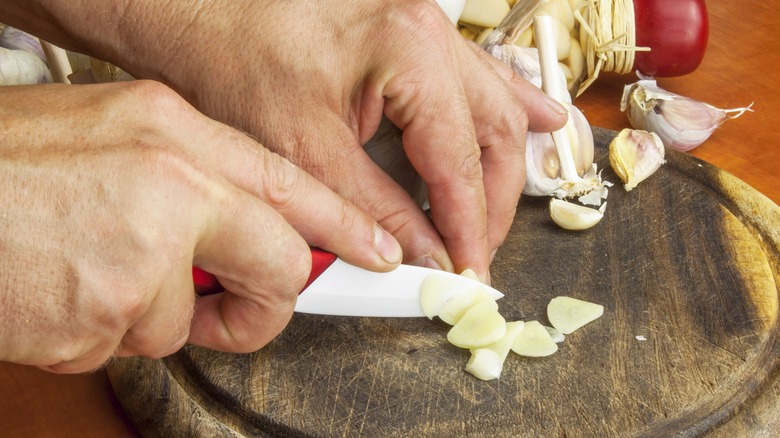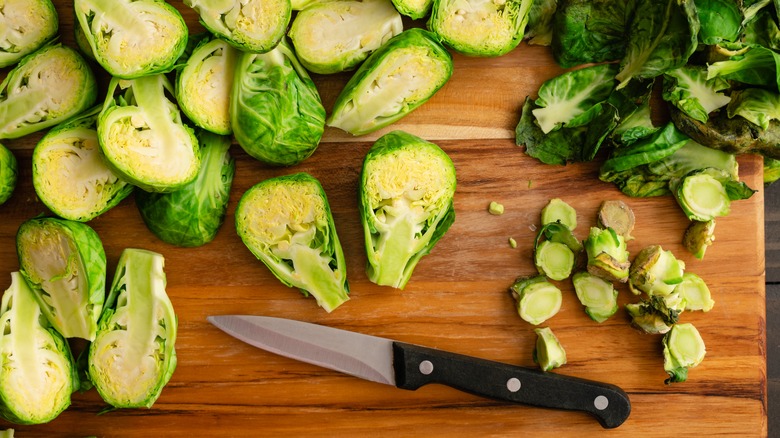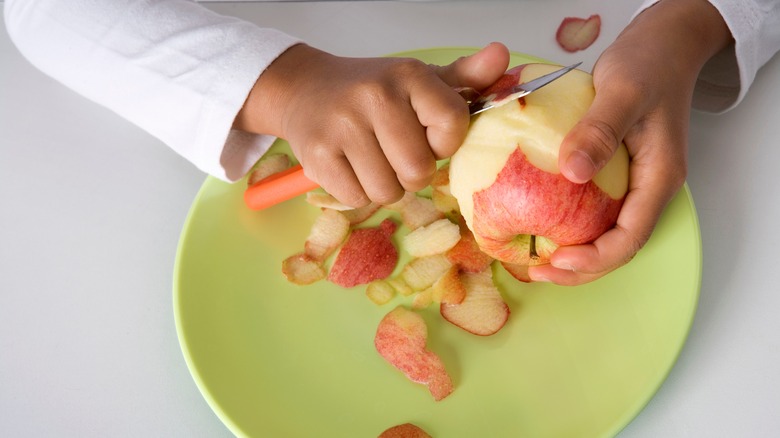The Finger Grip Technique To Know When Cutting With Small Knives
When it comes to kitchen cutlery, chef's knives get all the press, but they're not the only blade in the knife block. Small blades like paring knives, for instance, are the unsung heroes of any knife set, and they can do all kinds of detailed work like coring tomatoes for canning, peeling garlic, and making precise slices. Smaller knives might not have all the pizazz of an expensive chef's knife, but no self-respecting cook can make do without a few smaller blades in their kit. And just like big knives, it's important to use the right grip on the handle so that you don't mangle the food (or your hands). One of the most useful grips is to hold your index finger along the top spine of the knife, which will help you control your cuts.
While this isn't the only way to hold a small-bladed knife, this grip is important when you're making short, detailed cuts, like when slicing fresh strawberries or finely dicing a shallot. While it's not recommended to hold a large blade with a finger across the top, when you do it with a smaller knife, it becomes almost like an extension of your hand.
Choke up on the blade
Ask any garde manger chef what knife they'd bring to a desert island, and probably most of them would say a paring knife. This is because garde manager chefs work with a lot of vegetables and need to make lots of small, precise cuts to make up cold salads and edible displays. There's not a lot of surface area to cover on a paring knife, or other vegetable knives which tend to range from 2 to 5 inches in length, but that doesn't mean you can just hold them any old way and get good results.
Small knives can cut your fingers just the same as large knives, which means you need to maintain as much control when you're cutting food as possible. If you need to make multiple cuts with your paring knife, such as when you're chiffonading basil or mint, choke up on the knife with your thumb and middle finger to pinch the blade just above the handle. Then, place your index finger across the top of the knife. If you need a visual, America's Test Kitchen shows the way in an Instagram post.
Other useful grips for small knives
Holding a small knife with your finger on the top of the blade is best when you're doing any sort of cutting that requires straight lines. With that said, it's not the only way to hold a small knife. It really all depends on what you're working on. For example, if you're using your paring knife to peel a potato or a mango, it's best to hold the fruit or vegetable in one hand, and hold your knife in the other hand, while leaving your thumb of your dominant hand free to press down on the fruit. This will let you hold the knife at an angle so that you can scrape away peels.
If you're using your small knife for breaking down cuts of meat, however, it's better to grip your knife with an overhand approach, with all of your fingers wrapped around the handle (as opposed to pinching the blade). This will give you more force to get through tough spots, like joints between chicken bones.
If your goal is slicing tomato peels for decorative rosettes, or halving delicate fingerling potatoes, however, stick with the grip that places your index finger on top of the knife. Your pointer finger will always show you the way to cut straight, precise lines.


